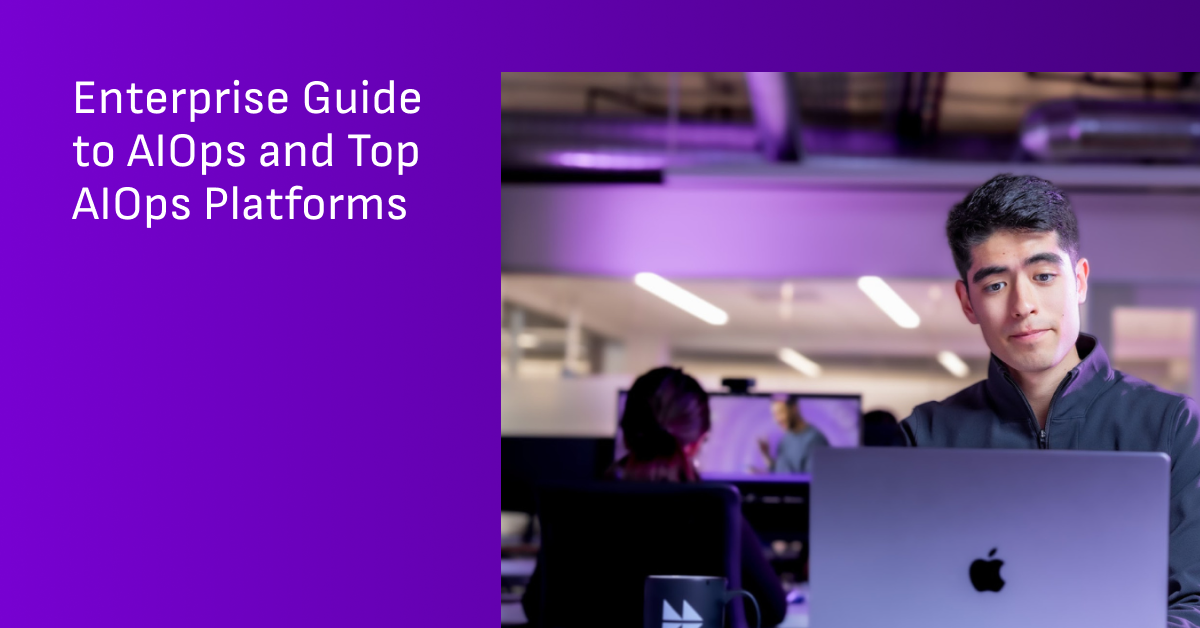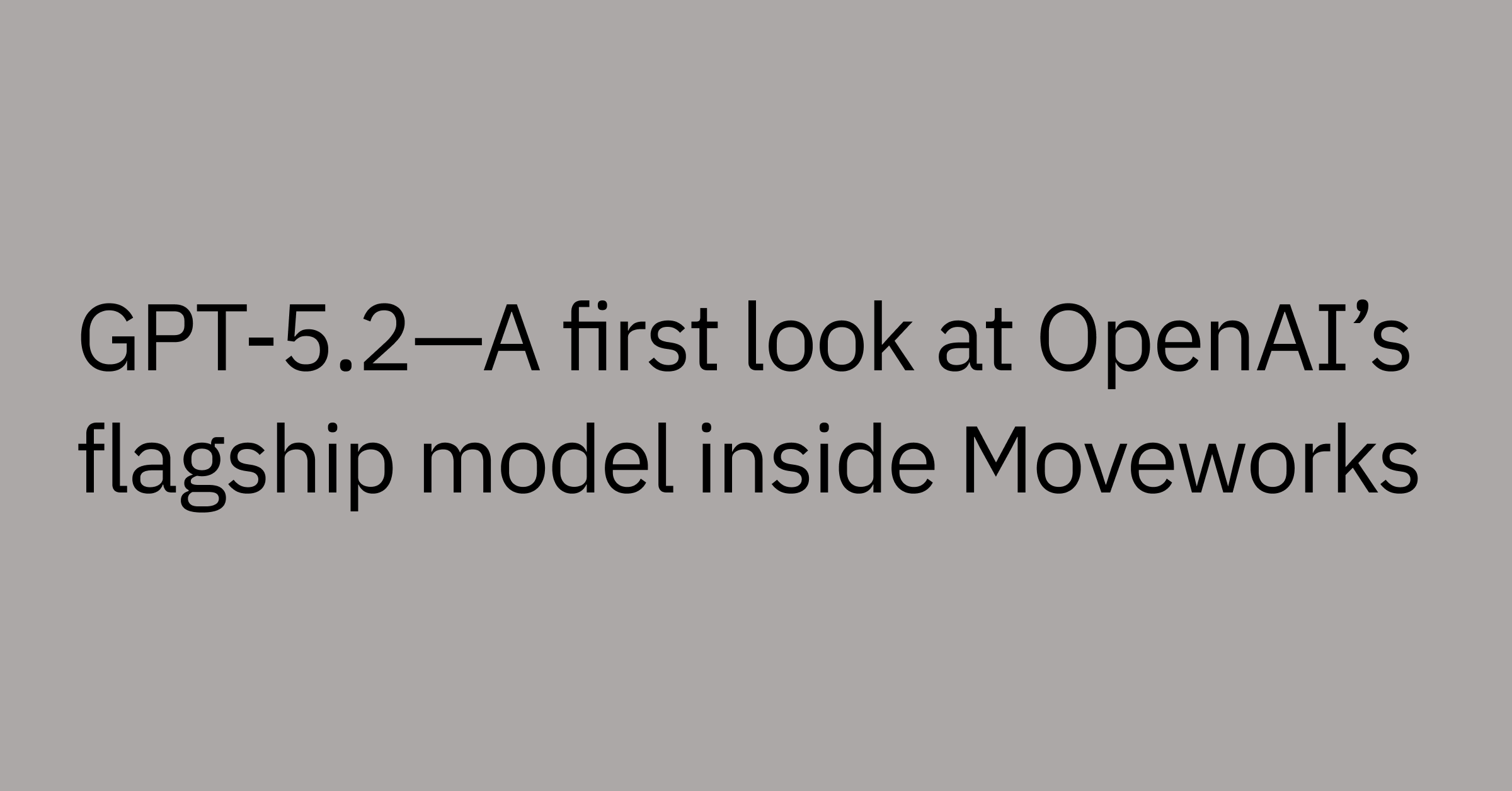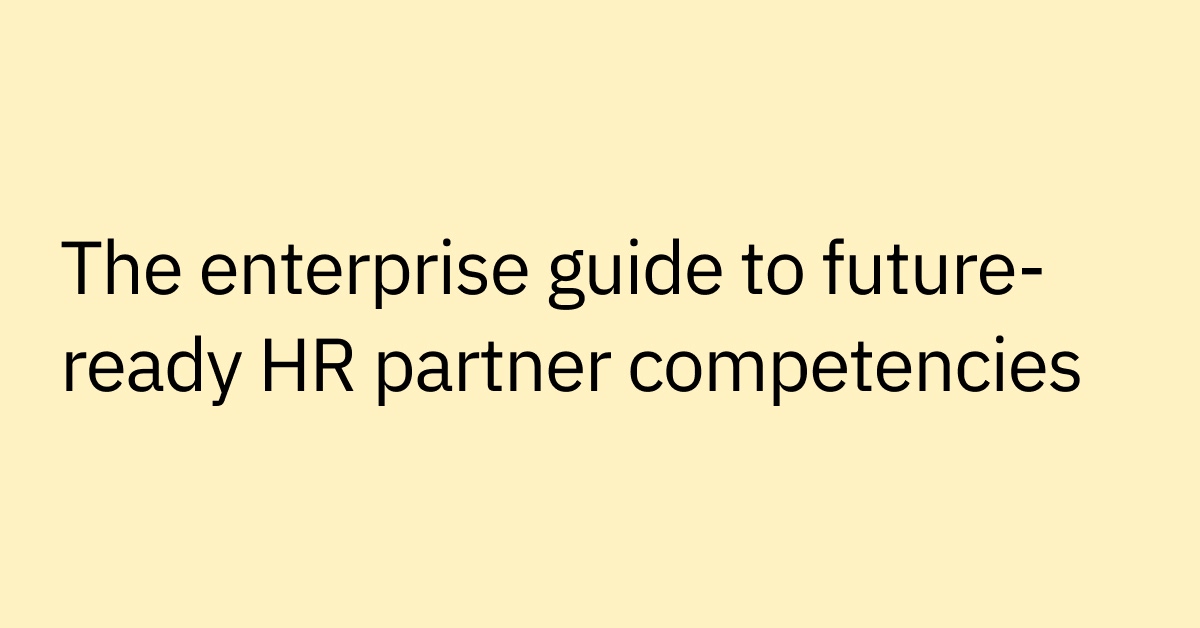Table of contents
Your organization's digital ecosystem is expanding by the day. Critical applications are now spread across cloud, on-premises, and hybrid environments.
And that's exciting — until suddenly, alerts start firing from multiple monitoring tools, managing your applications feels like a never-ending race, and your team tries to find insights to stay ahead of the curve, only to face data scattered across different dashboards and systems.
According to McKinsey, “More than 78% of all respondents report their organizations struggle with supporting IT in a hybrid work environment,” highlighting just how complicated modern enterprise IT systems have become.
The consequences? Decrease application performance, longer outages, frustrated users, and IT teams trapped in a reactive cycle of firefighting rather than innovation.
This is where AIOps platforms can help.
By harnessing artificial intelligence (AI) and machine learning (ML), these solutions can help you consolidate data, detect patterns, predict issues, and in many cases, proactively automate resolutions.
At a glance: Top AIOps platforms for enterprise
Company Name | Use Case | Price Range | Category |
PagerDuty | Companies that need robust incident response capabilities | Starts at $21 per user/month | Real-time Operations |
ScienceLogic | Organizations seeking comprehensive service health monitoring | Custom quotes | Hybrid Infrastructure Monitoring |
BigPanda | IT teams dealing with high alert volumes | Custom quotes | Event Correlation & Incident Management |
Splunk | Enterprises needing combined security and IT operations | Custom quotes | Security & Observability |
BMC Helix | Organizations requiring strong service modeling capabilities | Custom quotes | Service Modeling & ITSM |
ServiceNow | Enterprises already using ServiceNow for ITSM | Custom quotes | Integrated ITSM & AIOps |
IBM Cloud Pak | Large enterprises with complex hybrid environments | Custom quotes | Enterprise AIOps |
LogicMonitor | Companies seeking unified monitoring with AIOps | Starts at $22 per resource/month | Hybrid Infrastructure Monitoring |
New Relic | Organizations focused on application performance | Custom quotes | Application Performance Monitoring |
What is an AIOps platform?
Artificial intelligence for IT operations (AIOps) platforms merge big data, machine learning, and automation capabilities into a single platform to transform how IT departments manage digital infrastructure and services.
These platforms are built to gather, process, and analyze huge amounts of data from your entire IT setup. They use artificial intelligence to help you spot patterns, catch anomalies, connect events, and even predict potential issues before they can affect your business.
The primary goal is to streamline workflows, reduce alert noise, improve efficiency, and enhance the reliability of your IT infrastructure.
Traditional monitoring tools often work in silos, making things harder to manage. AIOps platforms, on the other hand, take a more unified approach to IT operations. They pull data from different sources, giving you a full view of your entire tech stack.
This integrated approach is becoming more important as businesses grow their digital presence across complex, hybrid environments where traditional monitoring often falls behind.
A common misunderstanding about AIOps is that it can easily handle data issues without addressing underlying data quality. In practice (and as with any data-related work), quality outcomes depend heavily on consistent and reliable data inputs, as well as any fine-tuning or customization that may be needed.
These platforms are built to work across hybrid cloud environments, but they can run into issues smoothly integrating data from different IT systems if they aren’t set up correctly.
What can AIOps tools do?
AIOps platforms come with a lot of features that have the potential to significantly improve how you manage IT operations. Let’s break down the key functions that make these tools invaluable for enterprise environments.
Data collection and consolidation
AIOps platforms serve as central hubs for your operational data. They gather information from across your infrastructure, including performance metrics, events and alerts from monitoring tools, logs, and transaction traces:
- Metrics on performance and resource utilization
- Events and alerts from monitoring tools
- Logs from applications, servers, and network devices
- Traces that track transaction paths across services
What makes AIOps platforms so powerful is their ability to unify all this diverse data, making it easier to connect the dots and analyze information that was previously stuck in separate silos.
The scale of data processing is also significant. They handle massive datasets efficiently, employing machine learning to analyze data for pattern recognition, anomaly detection, and predictive insights almost instantly.
AIOps tools are also adept at event correlation and noise reduction, pinpointing root causes, and providing proactive solutions, offering critical visibility and insight into the IT ecosystem. Additionally, their scalability and ability to adapt to changing IT landscapes help them to enable future-ready IT operations.
Real-time monitoring and alerting
AIOps platforms keep a constant eye on your systems, working to spot anomalies and potential issues before they can affect your business operations. By employing machine learning, these platforms can tell what constitutes "normal" behavior, dynamically adapting to changes in your environment to catch unusual activities that might signal problems.
This intelligent approach to monitoring can reduce alert fatigue by filtering out noise and focusing attention on significant issues. Alerts often include valuable context to help your teams get a clear picture of the potential impact and priority.
In addition, real-time insights can help you spot issues faster, enhancing your ability to stay in compliance with service level agreements (SLAs) and improve user experiences with a proactive approach to managing IT disruptions.
Learn the top 4 AI shifts for IT teams in 2025. Download the report to stay ahead.
Root cause analysis
AIOps platforms are able to assist with identifying the root cause(s) of issues by automatically linking related events and analyzing interdependencies within your infrastructure.
This capability is especially valuable in complex, interconnected environments where a single issue may trigger a flood of alerts across multiple systems. By automating connections between events, AIOps guides teams to probable causes and affected services, drastically cutting down mean time to resolution (MTTR).
These platforms enable some organizations to reduce MTTR from days to minutes, resulting in better system availability and helping to minimize business disruptions from outages.
Automate incident management
AIOps platforms can take a lot of the hassle out of incident management, with solutions available for everything from issue detection to resolution. Depending on the platform and your setup, this could include:
- Automatic ticket creation enriched with relevant context
- Dynamic routing of issues to the appropriate teams
- Auto-implementation of planned remediation steps
- Scaling infrastructure resources in response to demand fluctuations
- Resolving common issues with little to no support intervention
These automations can take repetitive tasks off your IT team's plate, giving them more time to focus on bigger, more strategic projects. For many businesses, this also means they can handle more incidents without needing to grow the team, boosting both efficiency and productivity.
AIOps analytics
Beyond immediate incident management, AIOps platforms provide valuable analytics to help you improve your operational efficiency over time. They analyze historical data and trends to:
- Provide data-driven forecasts
- Anticipate capacity limits before they start affecting performance
- Predict potential system outages
- Detect gradually developing performance degradation
- Recognize patterns in recurring incidents
With these predictive capabilities, your IT operations can foster a more stable and reliable environment, moving from a reactive to proactive approach. Since AIOps analytics allow them to tackle potential problems before they impact users, this leads to a more stable, dependable environment, and enhances overall service quality.
1. ServiceNow — Automate resolutions with generative AI
ServiceNow's AIOps features are built right into its IT Service Management platform, offering an easy way to handle event management, solve problems, and improve services all in one place. The recent addition of generative AI enhances these capabilities even more with natural language interactions and advanced automation.
Key features include:
- Event management with ML-based correlation
- Anomaly detection for performance metrics and logs
- Predictive intelligence for issue prevention
- Knowledge recommendation for faster resolution
- Native integration with the entire ServiceNow platform
ServiceNow AIOps is particularly valuable for organizations already using ServiceNow for ITSM. Users appreciate the seamless integration between AIOps capabilities and other ServiceNow modules, creating a unified workflow for incident management.
2. PagerDuty — Accelerate digital transformation with a cloud-based solution
PagerDuty delivers a cloud-native operations platform that helps organizations detect, understand, and resolve critical incidents quickly. The platform uses machine learning, automation, and plenty of integrations to simplify incident management and speed up resolution times.
Key features include:
- Real-time digital operations management with intelligent incident routing
- ML-powered event correlation to reduce alert noise
- Automated incident response with customizable workflows
- Comprehensive analytics for continuous improvement
- Over 700 integrations with monitoring tools, collaboration platforms, and ITSM solutions
PagerDuty is well-suited for organizations following DevOps practices and teams requiring 24/7 incident response capabilities. Users praise its reliability and the extensive customization options available for alert policies and escalation paths.
3. ScienceLogic — Optimize support with better visibility
ScienceLogic SL1 is a comprehensive AIOps platform designed to provide end-to-end visibility across hybrid IT environments. It brings together discovery, monitoring, event management, and automation to help you get a clear, unified view of your entire infrastructure.
Key features include:
- Automated discovery and relationship mapping of IT assets
- Uses behavior patterns to pinpoint the root causes of issues
- Service health monitoring with business context
- Tools to automate routine maintenance and fixes
- Integrations with major ITSM platforms
ScienceLogic is best for organizations with complex, hybrid environments that are looking to consolidate monitoring and event management. G2 reviewers particularly value its comprehensive dashboard functionality and ability to track services across multiple technology domains.
4. BigPanda — Improve IT reliability with purpose-driven analytics
BigPanda focuses on event correlation and incident automation, helping organizations reduce alert noise and streamline incident management. Its Open Box Machine Learning technology makes it easier to see how correlation decisions are made, which can help users understand and trust the platform's recommendations.
Key features include:
- AI-powered event correlation that can reduce alert volume
- Automated incident response with customizable workflows
- Root cause analysis with topology-based correlation (which maps relationships between systems to help identify the source of issues)
- Change intelligence to identify connections between changes and incidents
- Integration with existing monitoring and collaboration tools
BigPanda is ideal for organizations dealing with high alert volumes and complex, distributed IT environments. Reviews highlight its effectiveness in correlating alerts from multiple monitoring systems and providing actionable insights during incidents.
5. Splunk — Strengthen operational resiliency with unified security and observability
Splunk combines powerful data analytics with AIOps capabilities through its IT Service Intelligence (ITSI) module. The platform ingests data from virtually any source, using it to provide real-time insights and automated responses to operational challenges.
Key features include:
- Real-time data collection and analysis across all infrastructure types
- ML-driven anomaly detection and predictive analytics
- Service health monitoring with KPI tracking and glass tables (customizable visual dashboards that map key business and service metrics)
- Automated alert correlation and prioritization
- Integrated security and IT operations
Splunk is a good choice for organizations that want to combine security monitoring with IT operations. Users love its flexibility in handling all kinds of data and the strength of its search tools for sorting out tricky issues.
6. BMC Helix — Strengthen infrastructure with dynamic service models
BMC Helix Operations Management is an AIOps platform that combines service modeling, event management, and automation to help organizations optimize their IT operations. The platform's flexible service models give context to events, helping teams see how technical issues affect the business.
Key features include:
- Service impact management with business context
- Probable-cause analysis for faster troubleshooting
- Policy-based automation for event remediation
- Predictive analytics to identify potential issues
- Integration with the broader BMC Helix ITSM suite
BMC Helix is ideal for organizations that are already using BMC solutions and need stronger service modeling capabilities. Gartner Peer Insights reviewers highlight its effectiveness in supporting business agility and providing meaningful insights from complex data.
7. IBM Cloud Pak — Simplify incident management with end-to-end visibility
IBM Cloud Pak for AIOps provides enterprise-scale observability and automation to hybrid cloud environments. The platform uses AI to help IT operations teams predict and prevent outages, reduce noise, and automate fixes.
Key features include:
- Log and event correlation across hybrid environments
- Dynamic thresholds and anomaly detection
- Topology-based event grouping
- Natural language processing (NLP) for incident analysis
- Integration with Instana for application performance monitoring
IBM Cloud Pak can be useful for large enterprises with complex, hybrid cloud environments, especially those already working with IBM applications. Reviewers point out how well it manages large-scale operations and praise its strong AI features for event correlation.
8. LogicMonitor — Improve visibility with hybrid infrastructure monitoring
LogicMonitor brings together powerful infrastructure monitoring and AIOps tools to give you a clear view of on-premises, cloud, and hybrid environments. Its AIOps features can help you spot problems sooner, cut down on alert noise, and make troubleshooting a whole lot easier.
Key features include:
- Automated discovery and monitoring of IT assets
- Early warning system with anomaly detection
- Root cause analysis with topology mapping
- Forecasting and capacity planning tools
- Extensive integration capabilities
Organizations seeking a robust, unified monitoring platform will likely appreciate LogicMonitor’s built-in AIOps capabilities. Users especially love its easy-to-use dashboard and the wide range of technology stacks it covers.
9. New Relic — Minimize service disruptions with advanced machine learning
New Relic One combines application performance monitoring with AIOps capabilities through its Applied Intelligence feature set. The platform can help organizations spot anomalies, connect the dots on issues, and pinpoint the root causes of problems across their digital environment.
Key features include:
- Anomaly detection across metrics, events, and logs
- Incident intelligence with automatic correlation
- Proactive detection of potential issues
- Custom dashboards and visualization tools
- Integrations with popular DevOps tools
New Relic is a great choice for organizations focused on app performance and DevOps. TrustRadius reviewers report that it’s very effective at giving full visibility into how apps are performing and the genuine user experience.
10. Moveworks — Slash L1 ticketing with automation powered by agentic AI
While not an AIOps platform, Moveworks provides an AI-powered assistant that can transform enterprise service management by automating common help desk tasks and streamlining IT workflows.
Moveworks offers powerful AIOps capabilities through its Employee Experience Insights (EXI) solution. EXI analyzes IT service data to identify patterns, detect anomalies, and provide actionable insights that can help you improve service delivery and employee satisfaction.
The platform features:
- Natural language understanding (NLU) that interprets user requests made in everyday language
- Automated resolution of common IT issues without human intervention
- Real-time analytics on service performance and employee experience
- Integration with your existing ITSM tools, knowledge bases, and enterprise apps
- Multi-language support for global organizations
Moveworks is ideal for enterprise IT teams looking to reduce the volume of tier-one support tickets while improving the employee experience. By automating routine tasks, providing actionable insights, and empowering staff to resolve their own problems, Moveworks can give your IT teams more time to focus on more strategic initiatives.
Learn more about Employee Experience Insights (EXI) from Moveworks!
Overcome ITOps challenges with Moveworks
Adding Moveworks to your AIOps stack helps to enable upstream IT support by empowering employees to provide self-service independently and helping reduce response times and ticket volumes.
This is a potent ability when paired with AIOps platforms that provide IT support and is able to enhance efficiency and improve IT and service performance metrics across the organization.
Consider a more holistic approach to IT operations with Moveworks by aligning your AIOps with the power of an enterprise agentic AI platform for a more efficient and employee-friendly service environment.
Here’s how it is able to fit into the AIOps ecosystem:
- Deliver immediate support: Moveworks AI Assistant provides employees with 24/7 personalized, omnichannel support in 100+ languages that works wherever they do
- Uplevel your IT service desk: Manual workflow management often results in operational inefficiencies and long response times. Empower your service desk to be proactive rather than reactive and let your employees self-serve, allowing IT teams to focus on strategic needs.
- Create smarter enterprise portals: Intercept, categorize, and triage support requests, without involving the IT team. Bring all the benefits of Moveworks’ AI directly to ServiceNow or other ITSMs.
- Automatically support your employees: Automate ticket resolution end-to-end with seamless ITSM integration. That means your agents can work out of your ITSM — employees’ issues come right to them.
- Get useful employee experience insights: Moveworks lets you stay proactive by analyzing support data to identify patterns, detect anomalies, and offer actionable insights that help improve support processes and optimize the employee experience.
AIOps platforms do a great job with infrastructure monitoring and event correlation. But Moveworks helps take it a step further by focusing on the human side of IT — making it easier for employees to interact with support services and helping IT teams get a clearer picture of the overall employee experience.
See how Moveworks can transform your IT service management: Request a demo today.



